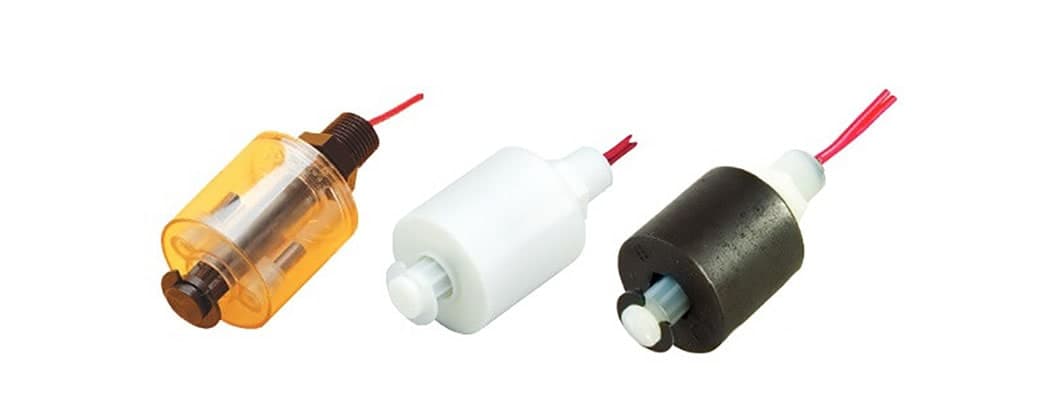What is a float level switch?
These handy devices can help measure metrics such as the presence or absence of liquids in a tank, vessel, or container with dependable accuracy.
It’s important to know that all mechanical float level switches aren’t created the same. There are many different varieties available depending on how you intend to use them. Still, the basic principle of operation for most float switches remains consistent: opening and closing as the liquid level in an object rises or falls.
Reed float level switches are commonly set as either normally open dry or normally closed dry. As the float on the normally open witches rises with liquid level, the magnets pull the blades of the reed switch together completing the circuit, allowing power to flow to any attached electronics. With normally closed float level switches the reed switch opens as the float and magnets rise with liquid level, breaking the electrical circuit.
Types of float switches
| Single Point Float Level Switches | Multi-Point Level Switches | Continuous Float Level Switch |
|---|---|---|
 |  |  |
Single point-level switches are ideal for reliable and accurate tank level detection. They are available in a vast range of sizes, mountings, materials, and sensing technologies (from mechanical to no moving parts) which include float-level sensors and switches, electro-optic level switches, capacitive level sensors, and switches and ultrasonic level sensors. | Multi-point level switches are ideal for monitoring multiple liquid level points within a single tank or for monitoring two or more liquids in a tank and are available in engineered plastic or metal alloy, a broad range of mounting options and float materials and can be configured with two to seven independent switch actuation levels. | Gems continuous level transmitters are ideal for remote tank measurement and are available in a variety of sensing technologies: float, radar, and ultrasonic liquid level sensing. Level transmitters utilize multiple material combinations making them compatible with most liquid media and challenging fluids (including ultra-pure, dirty, coating, scaling, and corrosive types). |
How to select a float level switch?
Choosing the type of float level switch you want takes some consideration. Low voltage float switch? High-temperature float switch? Of course, what liquid you’ll be hoping to measure with the float switch also matters. If you’re working with a liquid that is prone to gather deposits, whether it’s lime or calcium, for instance, they can eventually build up to a point that causes float switch failure.
First, though, you’ll need to determine the specifics of your mechanical float switch installation, or how you want it to be physically configured, for instance, whether that’s vertically or horizontally. How float switches are mounted makes a big difference in how they operate and interact with the liquid. While the simple premise of operation is the same - rising or falling liquid results in a magnetic field, moving into the areas of a reed switch and sparking its activation - the variations between a horizontal float switch and a vertical float switch are worth nothing.
When the liquid level rises, the float on a horizontally-mounted float switch rises with it so eventually opening or closing the circuit. A vertically-mounted float switch is set to activate or deactivate at specific levels. Based on the liquid’s fluctuation above or below the set levels the float switch will work to alert its owner to the changes.
In terms of durability, magnetic reed switches are known to be reliable for years of trouble-free use. Should a customer need a specialized float switch, however, there are several different ways to customize a switch depending on preference. For instance, custom float level switches can be configured with up to seven different switch levels, depending on the series type.
 SEARCH OUR RESOURCE CENTER
SEARCH OUR RESOURCE CENTER

